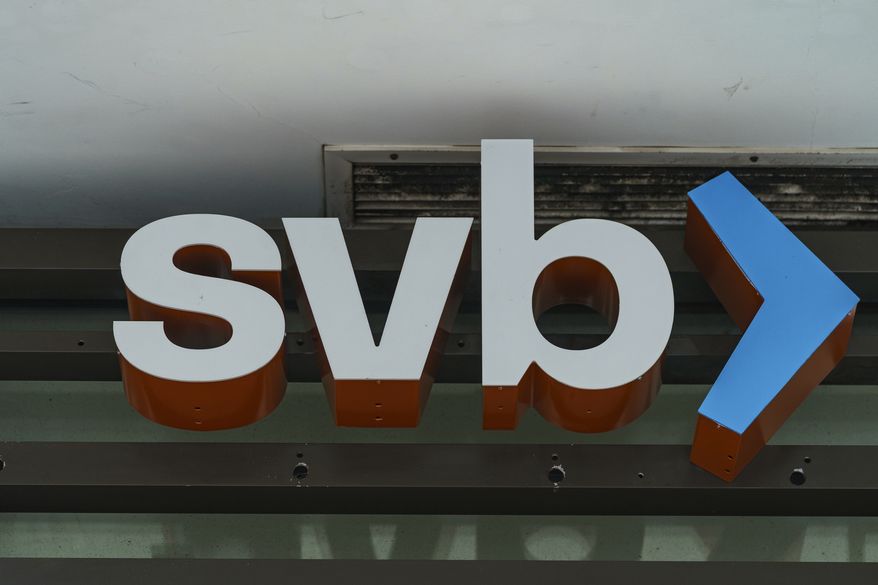Some were shocked when Silicon Valley Bank and several other banks failed. Massachusetts Democratic Sen. Elizabeth Warren and other know-nothings immediately called for more regulation without apparently realizing that much of the problem was caused by the existing regulations and the regulators not doing their job.
Commercial banks are fractional reserve institutions and, therefore, do not have 100% of their reserves in a liquid form that can be redeemed by depositors at the time of their choice. Rather, the bank lends out some of the depositors’ money to those wishing to borrow, and what is left is normally used to purchase government or other high-grade bonds to serve as reserves.

Bankers have learned over the centuries that very rarely do large numbers of their depositors ask for their money back at the same time — unless the bank is, or rumored to be, in trouble. Usually, liquid reserves in the 5% to 15% range (depending on the type of deposit, the bank’s business practices, and the stability of the political jurisdiction in which the bank operates) are sufficient to meet any expected demand for withdrawals. But the bank is always at risk that it could get hit with an unexpected surge of withdrawals.
Banks face a number of other risks, such as the loans they make may not be sound, and if a bank has too many loan losses, it will fail. Banks also have a mismatch in their portfolios in that many of their loans are for a long duration, but their deposits can be withdrawn at any time — that is, they lend long and borrow short. Bankers are always under pressure from their stockholders to increase profits, which means making riskier loans with higher interest rates.
But that conflicts with their fiduciary responsibility to their depositors to protect their capital.
Banks normally keep their liquid reserves in government bonds, which usually provide at least a little interest income. U.S. government bonds are considered riskless because the “full faith and credit” of the United States is behind the principal (or face amount) of the bond. But as every banker and ideally every bank customer should know, as interest rates rise, the value of the bond falls (not its face amount but its market value) and vice versa. Those who speculate in government bonds are betting future interest will rise or fall, depending on whether they have long or short positions in bonds. Those bankers who were managing SVB had put a large amount of the bank’s assets into government bonds without hedging for the possibility of a big rise in interest rates; so, when interest rates rose, the market value of their bonds fell, causing the bank to be underwater.
The Federal Reserve had been explicit for months that it would be increasing interest rates in attempting to reduce inflation, so the officers of the SVB were clearly stupid or irresponsible or both (and reportedly putting woke ideology over depositors’ interest). And the Fed regulators, who had full access to the SVB financial statements, appear to be equally clueless and irresponsible.
(As an aside, you may have noticed that many government regulatory agencies, such as the Centers for Disease Control and Prevention, Food and Drug Administration, Federal Aviation Administration, Department of Transportation, and Securities and Exchange Commission, have all made many costly and dangerous mistakes in the last two years, which increased risks for the citizens rather than protected them. This, again, proves that government is often more of a danger to your pocketbook, health and liberty rather than a protector.)
After the 2008-2009 financial crisis, Congress decided to act to “improve” bank regulation, and in 2010, they passed the Dodd-Frank Act to promote financial stability, etc. — all in the name of protecting the consumer. One of the ironies of the current mess is that the co-author of Dodd-Frank, retired Rep. Barney Frank, a notorious advocate of Big Government, joined the board of Signature Bank — which also went under last week.
To protect bank depositors from loss, the federal government has been providing deposit insurance — now up to $250,000 per account — paid by the banks. But last week, the Biden administration broke the mold by agreeing to pay off all depositors in SVB regardless of the size of the deposits, including tens of millions from Chinese companies controlled by the Chinese Communist Party. This puts an added financial burden on other depositors and increases the systemic risk to the banking system by encouraging bank officers to be even less responsible.
All is not lost. There is a successful fractional reserve banking model, and that is where the owners of the banks have unlimited personal liability for any losses. A number of Swiss banks have been operating successfully with no losses to their customers for several hundred years with little regulation. These Swiss private banks are operated as partnerships, with the partners having full personal liability.
Consider a world where banks are not regulated in the current manner — no government reserve requirements or deposit insurance, etc. — but where the market decides what is or is not a sound bank and banking practice.
But in addition to the stockholders being totally at risk for the bank’s performance, senior bank managers and officers would be required to have a meaningful equity stake in the bank. So they would pay a very high price for irresponsible risk-taking with other people’s money.
• Richard W. Rahn is chairman of the Institute for Global Economic Growth and MCon LLC.
https://www.washingtontimes.com/news/2023/mar/20/evaluating-demise-of-silicon-valley-bank-and-role-/
© Copyright 2023 The Washington Times, LLC.